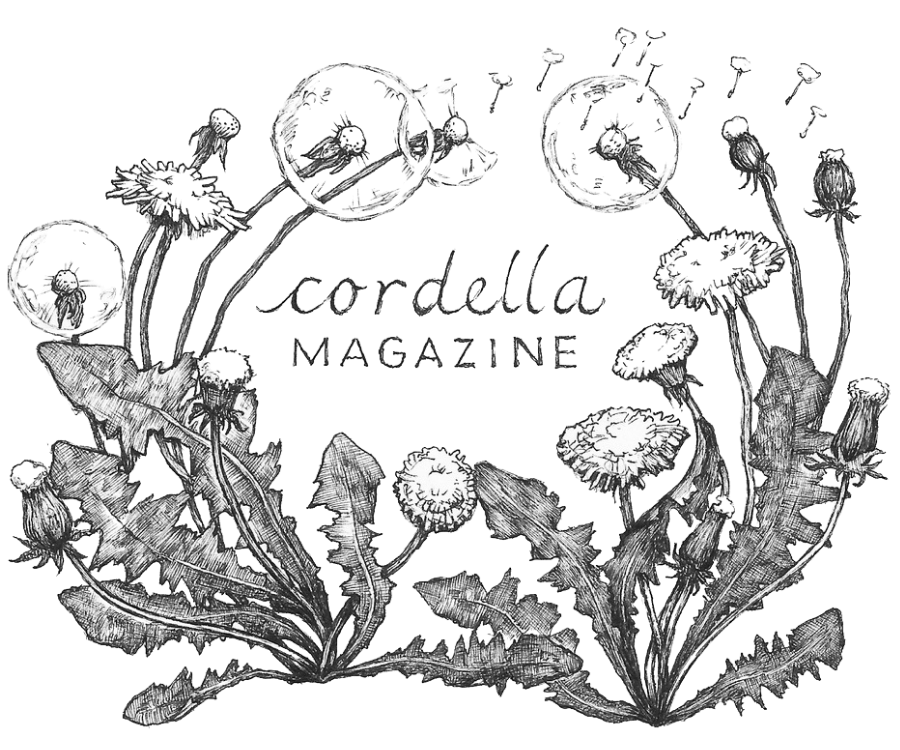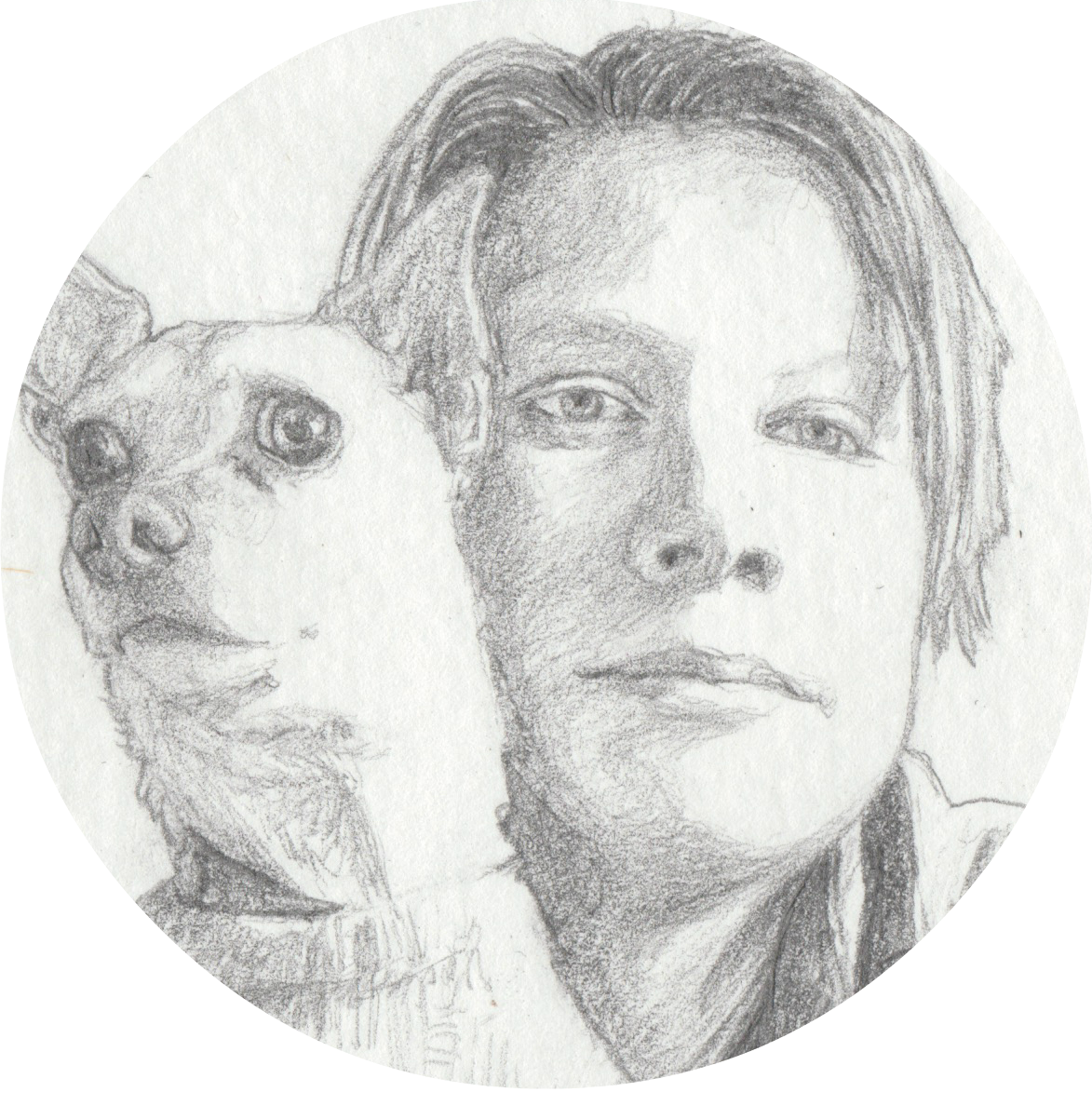The Smaller of Two
by Sara Greenslit
It was the smaller of the two that was doing the leaving. As if the act was passive, an afterthought, end of a trailing sentence. But no, I thought of it as an amputation, losing a breast. The mastectomy required full engagement with surgeons, radiologists, oncologists and pathologists. No one was skidding along, watching the scenery.
It was physical, its heft vanished. I could not look at the stitches, I could not look in the mirror, I could not touch it, I could not sleep. It was submitted, sent to the lab, measured, sliced, categorized, diagnosed, reported.
I didn’t want to think about, feel, or consider the healthy, intact one having a new life, either. I could have opted to be completely breastless; it felt as such. I wrapped myself up, I hunkered down.
I did not like the remaining breast rising out of the tub water, getting cold. I did not like the missing one aching after I lifted a box. I sat slumped, I walked with my left arm folded over my flat chest.
How much does a breast weigh? BIOPSY TISSUE PANEL does not state. It reports a breast measuring 17 x 17.7, ranging 4.7 cm with an everted nipple. It is hard to read this, flesh taken from my flesh, set flat on a pathologist’s work bench.
How does one go from this great subtraction, to an eight centimeter long scar? The body quickly seals off what was taken, subcutaneous suture, almost a self-adherent zipper.
The mastectomy site came with unexpected numbness, the unexplained fine print prior to surgery. You can feel pressure on it, yes, but also a strange disassociation, a missing signal, neuronal and almost nausea-inducing. And the heart beats right under the fingertips.
I felt the twinge in an absent nipple, and a temporary and randomly recurrent tingling down my left arm. The incision stung the first few months when I watched a sad movie. I couldn’t reach up completely to get a jar off a high shelf. I put on weight, the scar thinned out, and the area caved in a little, or rather, a crater of fat rose around it.
I started out with big sweaters, open shirts to flow and cover. But to wear scrubs at work, uncomfortable with my uneven chest, I chose a prosthesis. At the fitting, I stood naked from the waist up in front of a stranger, to be measured and kindly assessed. I watched myself from with-out, to study this person I had become.
Busy during the day, I don’t noticed the pulling, the replacement. At home, barely in the door, it feels like a burden, a ruse. I take the prosthesis off the minute I get in the door. It’s not my friend. I wear it for the rest of the world.
The prosthesis has the heft and movement of a real breast. It has a pale nipple that does not stand out like a real one. Sometimes the bra rides up, and often the back of the silicone form is damp from sweat. Occasionally I will squeeze the fake breast and then the real one, and then the fake again, for reminder and comparison. Tweak the replica nipple, feel nothing.
I store the soft detachable thing in its concave plastic house to retain its form. I don’t like to leave it around, as if some secret is unveiled. But we all know what’s not there.
Before I had my mastectomy, I saw a plastic surgeon who said, If you are not 100% comfortable with the possible complications of reconstruction, I would not do it. I did not. Then I watched two in-laws require repeated trips to the operating room for their own breast restorations: recurrent infections, chronic pain, dehiscence, asymmetry, hardening. I had made my anti-reconstruction decision swiftly; I could always change my mind. But later, the data just proved more severe.
•••
I woke up after my mastectomy in my hospital room, too weary to look around, but I heard everything, my friends’ footsteps, the angle of voices in the space, people moving around the room. Narcotized hours weren’t a bad place to float; I was certain the nurses were the kindest beings on earth.
Home the next day, I kept thinking of a cliché: being struck by a truck. My left arm had been raised next to my head for four hours as the anesthesiologists administered local pain blocks and general anesthesia, and the surgeons worked at finding the sentinel lymph node and then removing the breast. My whole left side was stiff, bruised, aching, like I’d been thrown against a cement wall.
Would I want to purposely repeat this?
After the surgery, the resulting fatigue and pain faded. Deep in my reptile brain, however, remained a hint of the adrenaline, the quickened heart, and the utter blank space of nothingness once I was rolled down the hallway to the operating room. I looked at mastectomy pictures on the internet to remind myself, and I panicked. The memories of the first round came down like the silent wings of an owl, swift, deadly and quick.
What am I willing to lose, and lose again.
•••
I cannot decide which side I prefer, the flat or the curved? the missing or the remaining? Ask me tomorrow, ask me today, ask me next week. My answer changes. Which side will I choose?
I try to pick. The scarred side? Internet mastectomy tattoos flourish in hue and detail: roses and lilies and morning glories and cherry blossom and lotus, geometric wings, a chickadee, a phoenix, a claddagh heart, black cats, a squirrel in a lush forest, scrolls and branches and filigree. I fell into the web, lost hours, looking.
One can appreciate the practicalities of a prosthesis. A mastectomy bra can act as a wallet: driver’s license and money tucked in the prosthesis pocket, good for dancing. Would I still dance with no breasts? Would I add two prostheses? Would I finally stand un-stooped? Ballast or sham, subterfuge, artifice, hoax, device, machination. Booby trap.
Perhaps I am going about this wrong. Maybe I should trumpet both sides, walk breast out, shoulders back, invite the eyes. We are drawn to the missing, the aberrant. My whole life I have kept myself behind a curtain, quiet, like a cat hiding from company. What, am I anxious of saying: I am here?
•••
Yet one can say all she wants about future choices when she is not amidst the strata of suffering.
I have not yet had to make new, big decisions. I have bloody discharge coming from the remaining breast, but I am not yet full-bore afraid, not yet kept awake at night. But when I rouse with a pacing heart, I think, I should give up caffeine, I should have my blood pressure checked. An MRI came in May, and was normal. The recent ultrasound looked fine. We will run tests again in another six months. We are watching, we are waiting.
We have choices. To do things, or not do to them. To choose a less terrifying option, and then see what happens.
•••
I made stained slides of the new serosanguinous discharge and looked at it at work, perplexed, fascinated, scared, then settled on What If. This is likely a poor idea, since I am no oncologist, no pathologist, not a MD, but someone sidling up through the side door, as a DVM. I email the slide images to my surgeon and she replies, Boy you are going to challenge me! I cringe. I crossed the line. But then she writes, I love it. The slide goes to the pathologist. The surgeon writes back, It’s not an official report, but the pathologist doesn’t see any cells that elicit alarm.
If I elect a second mastectomy, the surgeon said since I had cancer before she would also remove the sentinel lymph node in my armpit, the first node that drains from the breast. I look at the photos of my lymph node slides from my first mastectomy, held up to the window so you can see the stained purple islands, slices of the node, like a thumbprint against the distant pine tree in my yard. They are beautiful in their own way, like flattened petals, despite their hidden danger, a speck of spreading cancer.
Something that was inside, but now is so clearly out. The body, sliced and dyed, is gorgeous even in its own destruction.
Sara Greenslit
Sara Greenslit works as a small animal veterinarian in Wisconsin. She has published two hybrid novels, The Blue of Her Body (Starcherone) and As If a Bird Flew By Me (FC2). She has a fondness for tiny dogs and lives with three.



